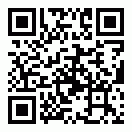
In a series of posts, I am going to introduce the reader to the existence of ISO 17025 and its importance. I am going to introduce it in bite-sized bits for easy digestion. Just like all matters of learning, knowledge is incremental over time and builds upon previous exposure.
So far we have answered the following questions:
- What is ISO 17025?
- Why do we need standards? Why ISO 17025 and policy, procedures and instructions matter.
- Why is ISO 17025 so important to us in forensic science?
- Why should the criminal defense community care about ISO 17025?
- How can ISO 17025 provide a simple method to develop themes to cross-examine experts?
- Is your state crime lab accredited?
- How can ISO 17025 be used by the criminal law practitioner to help get discovery?
- Can ISO 17025 can answer the question as to who the actual analyst is?
- How can ISO 17025 help minimize the particular problem of fraudulent credentials of forensic scientists?
- Who is the “customer” per ISO 17025 and why is it important
- How ASCLD/LAB International conflicts with ISO 17025 and honest scientific reporting of Uncertainty Measurement (UM) in forensic science.
In today’s post we seek to tie all of the other 11 posts together into something meaningful to the Practitioner.
While it is important to note for the criminal law Practitioner that ISO 17025 is coming to a laboratory near you, it provides only a useful framework from which minimum standards of scientifically acceptable policy, procedure, and instructions result in the overarching Quality Management System. These are minimum safeguards that are recognized per ISO and certainly do not constitute or endorse a laboratory to produce a forensically acceptable result at the end of its implementation of the ISO 17025 quality management system.
(Consider this: Who wants a doctor who only meets “minimum standards” or a lawyer who only meets “minimum standards.”)
Some of the most striking inadequacies of ISO 17025 and ASCLD/LAB’s interpretation of it concerns the definition of “customer” as described in our earlier post as well as when and if Uncertainty Measurement (UM) should be reported as detailed as discussed previously.

Another systemic shortcoming of ISO 17025 and ASCLD/LAB’s interpretation of it comes in the basics of true Bayesian-based expanded UM reporting. While they address for the first time the need to be uniform and consistent in the approach towards testing and calibration among laboratories, within a laboratory, and even down to the analyst, they focus exclusively on the quantification of an unknown. It leaves untouched and unaddressed, except indirectly in the method validation requirements, the importance of the qualitative measurement and its validity. Nowhere in ISO 17025 is the need to be selective and specific in a reported qualitative measurement report directly addressed. This rush to be able to express UM in terms of quantification seems to be placing the cart before the proverbial horse . If one focuses on the quantitative measure but first cannot be certain that the method employed is one that results in a qualitative measure that is both selective and specific to the exclusion of all other possible methods and conclusions in terms of a qualitative result, then there can be no real value in the measure itself. In other words, the key question of “Does the method exclusively and uniquely measure what we need measured?” remains unaddressed.

The days of ISO 17025 are shortly coming upon us. If the defense bar is properly prepared, then we can provide to the trier of fact and the citizen among us who has entrusted us with his liberty that final and all-important last check to the unfettered power of the great Leviathan that is the government. It is up to us, armed with knowledge, to defend the citizen among us who has been accused of a crime. It is through our own ignorance that we can insure that personal tragedy and injustice results. As Albert Einstein once penned “As far as the laws of mathematics refer to reality, they are not certain, as far as they are certain, they do not refer to reality.”


